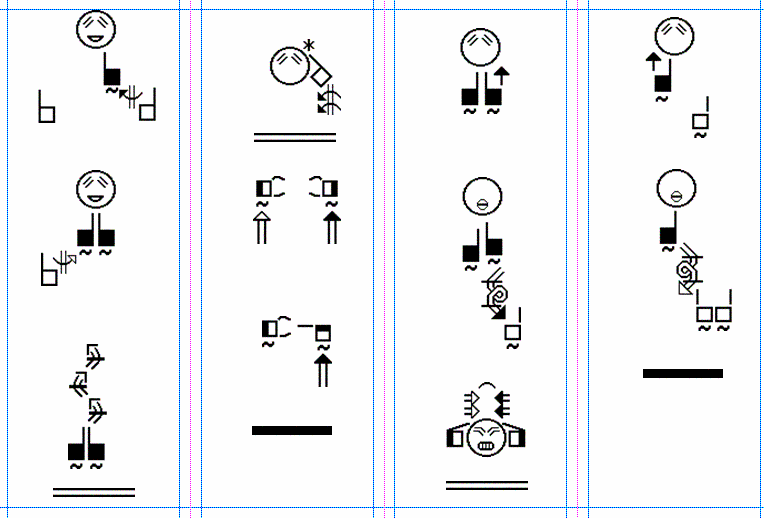Fun fact: the number of users of American Sign Language is somewhere in the range of half a million to a million.
As a language in the US, this puts in in commonality range of like Korean (1.1m), German (0.92m), Italian (0.58m), or Japanese (0.46m) https://twitter.com/Kaizey/status/1361401944225546241
As a language in the US, this puts in in commonality range of like Korean (1.1m), German (0.92m), Italian (0.58m), or Japanese (0.46m) https://twitter.com/Kaizey/status/1361401944225546241
Another fun fact: ASL is a separate language, not just a non-verbal form of English. It incorporates English loan words when fingerspelling words which don't have a sign, but the grammar is different from English.
This is one of the reasons why it's a language, not just a form of English where you sign instead of speaking words.
It's not like the connecting between spoken and written english.
It's not like the connecting between spoken and written english.
Another consequence of this is that British Sign Language and American Sign Language are completely different languages. They're not mutually comprehensible.
Even though they're both signing languages from countries that speak english, they're mostly unrelated.
Even though they're both signing languages from countries that speak english, they're mostly unrelated.
There's also Auslan (in Australia) and New Zealand Sign Language, which are descended from British Sign Language. They're closer together, but do have differences.
Auslan also has influences from Irish Sign Language, which is related to French Sign Language.
Which brings us back to American Sign Language:
It's actually descended from French Sign Language!
Which brings us back to American Sign Language:
It's actually descended from French Sign Language!
about 60% of American Sign Language signs match modern French Sign Language signs.
An interesting consequence of signing languages not just being a non-verbal form of spoken languages used in the same places, is that there's something you might not necessarily think would be needed: writing systems.
Because it's a language and people might want to write it down, of course. It makes sense.
But it's easy to make the mistake of thinking that the writing system for ASL would just be English writing. It makes sense, right?
But it's easy to make the mistake of thinking that the writing system for ASL would just be English writing. It makes sense, right?
but no, ASL is not English, so to write down ASL you don't just write English.
You can, of course, be someone who uses ASL for their non-written communication but writes in English, but then you're (at least) bilingual, they're different languages.
You can, of course, be someone who uses ASL for their non-written communication but writes in English, but then you're (at least) bilingual, they're different languages.
There is not a single unified ASL writing system, but there are several systems of different origins, with different ones used in different communities and having different evolutionary paths.
These include si5s (and the related ASLwrite), SignWriting, ASL-phabet, and SignFont.
These include si5s (and the related ASLwrite), SignWriting, ASL-phabet, and SignFont.
fun fact: Sign Writing is related to a notation invented by the same person, Valerie Sutton. That'd be DanceWriting, which was invented to record dance choreography.
Another thing you might not know about ASL: It's sometimes taught to children who are not deaf/Deaf or children of Deaf parents.
I still know a little bit of ASL because my siblings and I were taught it because of my little sister, who has typical hearing.
I still know a little bit of ASL because my siblings and I were taught it because of my little sister, who has typical hearing.
But she has Down syndrome. And one thing that often can happen with children with Down syndrome is that they have speech impediments or speech delay. (She has/had both)
But it's basically a physical problem: Her vocal cords and such take longer to develop, and require more work. Her mental ability to communicate is fine, and with a lot of speech therapy over the years she's able to talk fine, with some minor remaining impediments.
but when she was young, she couldn't really speak yet, for the physical reasons relating to her vocal cords and mouth, not for any mental reasons. And you know what doesn't depend on your vocal cords? SIGN LANGUAGE!
So she was taught ASL from an early age, with my other siblings and I learning it too, so we could communicate. Eventually we stopped using it because she "caught up" with her physical development and speech therapy, and we switched to using English full time.
but it was very useful early on in her life, as otherwise it would have been years later before she could really communicate with anyone, about anything.
Imagine being a kid of like 6 or 7 and you still can't even say "FOOD" when you're hungry. That would have made her difficult childhood even worse.
As it was, she could sign it just fine, years earlier.
As it was, she could sign it just fine, years earlier.
Anyway, this isn't to say "ASL is useful because people with typical hearing can use it too". I just thought I'd give my personal story with ASL.
But yeah, the summary is that ASL is a language (which you'd think isn't something anyone has to argue, but it is), and it should be taught in schools as it's a very important language to many, many people.
It's also a very interesting language that doesn't have the simple origin that you might naively expect.
It's not just English but with spoken/written words replaced with signs. It's its own language, with its own grammar, vocabulary, dialects, and accents.
It's not just English but with spoken/written words replaced with signs. It's its own language, with its own grammar, vocabulary, dialects, and accents.
(like any other language)

 Read on Twitter
Read on Twitter



